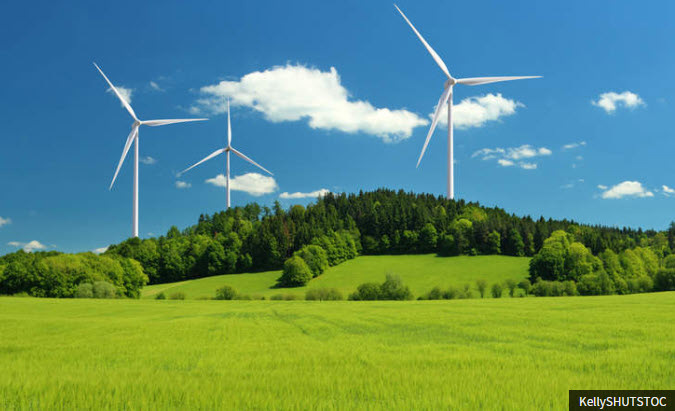Oil & Gas 360 Editors Note: Trevor d’Olier-Lees writes an excellent article looking at the renewable market, and if a downturn is on the horizon. The key take away’s from the article are surrounding the removal of tax incentives and the “market-driven era has begun”. I have always said that a balanced approach to energy production between fossil fuels, nuclear, renewable is critical. Looking at the total impact to the environment is also critical. We will be covering the facts about true production of pollution in future articles scheduled. In 2014 Warren Buffett said; “For example, on wind energy, we get a tax credit if we build a lot of wind farms. That’s the only reason to build them. They don’t make sense without the tax credit.”

Taking a sports analogy, renewables proliferation resembled a sprint for most of the last decade. Estimates suggest that renewables today enjoy a 22.5 percent share of the world’s energy mix — a dramatic increase from 8.6 percent at the start of the last decade, with solar taking claim as the dominant technology. Impressive growth has been due to some $2.6 trillion of clean energy investments during the previous decade.
But the market seems poised to transition from a sprint to a long-distance event: Indeed, capacity growth in 2018 was flat for the first time since 2001. The slowdown should remind the sector that with all of renewables’ blossoming, complications have arisen, too — for project owners and technology producers alike. So, while the renewables market has expanded in recent years, this has brought new complexities to consider.
The market-driven era has begun
The momentary lapse of growth is best explained as the meeting point of myriad challenges. With installation costs falling to an extent that renewable additions globally are outpacing coal-fired builds, the rationale for further government subsidies has become more contentious.
On the investment side, market growth understandably has precipitated greater de-risking activity, but this generally has decreased lending margins as well as return on capital. Beyond the diminishing returns on investment, there have been instances globally of declining governmental support.
Indeed, with installation costs falling to an extent that renewable additions globally are outpacing coal-fired builds, the rationale for further government subsidies has become more contentious.
Subsidies are being scaled back
Compounding the issue is that some governments have ceased to offer subsidies to developers building new projects, which has contributed to investors’ caution.
[contextly_sidebar id=”2nUNPL806JoE7F0jY0xvOnj3h8UtM4bC”]
For instance, feed-in tariffs (FITs) are increasingly considered an inefficient means of supporting the energy transition since long-term contracts are less able to incorporate technology advancements or falling energy costs. Quite often, FITs ultimately have led to higher electricity prices for end-users. In turn, renewable projects today are increasingly exposed to the market, as competitive auctions and merchant pricing have become commonplace.
Other incentives are falling, too. In the United States, the two meaningful tax benefits — the federal production tax credit and the solar investment tax credit — are undergoing a step down before their current expected phaseout. What’s more, many states already have achieved their short-term minimum requirements set out by Renewable Portfolio Standards, which may have contributed to the country posting only modest growth in 2018. Elsewhere, changes to incentives have slowed growth for onshore wind additions in India and for solar in Japan.
Risk/reward ratio less appealing
The removal of subsidies and incentive programs presents heightened risks for sponsors, as greater reliance on merchant cash flows could erode the asset class’s credit quality — or even potentially undermine its future growth.
In the absence of long-term PPAs, sponsors may need strong balance sheets to fund the new renewables schemes being awarded, and project financing may be more challenging to structure, due to the implied volatility of cash flow and the limited leverage potential.
The difficulties of deploying further projects in developed markets places a spotlight on investment in projects in emerging ones.
Even with the use of credit enhancements that serve to support private investment into developing markets, the truth is that these projects generally remain less appealing to institutional investors; this is despite non-OECD countries requiring an additional $4.3 trillion of total capital for renewables generation between 2015 and 2040 if they are to meet the Paris Agreement’s 2-degree Celsius scenario, according to Bloomberg and Ceres research (PDF).
Major impediments often have beset the offshore wind segment due to turbine models requiring repairs to eroded blades — the costs of which project owners may not have factored in.
The technology conundrum
There have been technological challenges, too, as not all advancements (particularly unproven ones) have been introduced seamlessly — with cost underestimations and technological under-performance causing reduced cash flows and rating actions.
In other instances, setbacks have come well into an asset’s operational life: For example, major impediments often have beset the offshore wind segment due to certain turbine models requiring repairs to eroded blades — the costs of which project owners may not have factored in.
However, other technological challenges could soon be at least partly alleviated.
The buzz around batteries
On the horizon, there’s enormous anticipation around the wider deployment of battery technology to help solve the problem of renewables’ intermittent nature (they only operate when the sun is shining or when the wind is blowing).
Most batteries in deployment today are in the U.S. where they are already cost-competitive, if only for short durations.
But, with technology costs falling, we expect this to dramatically change over the next five or so years, with support likely to come from emissions targets and from the rising use of off-grid distributed generation.
Reasons for optimism
For all the headwinds facing the renewables market, there is still reason to believe that market growth will pick up.
Indeed, S&P Global Platts Analytics still expects renewable additions to continue over the next two decades at an annual growth rate of 7 percent.
Certainly, further battery storage deployment is a key aspect of renewables’ end game, along with supportive governmental policies that help stimulate investment and the granting of permits, while reducing risks for developers. The recent hiatus of growth is a stark reminder to the market that an upward growth trajectory shouldn’t be taken for granted.
Broader stimuli exist, too, such as higher oil prices, greater buy-in for renewables from large corporations (best explained by the rise of corporate power purchase agreements) and the electronification of industries, to name just a few.
The new reality
Importantly, though, the recent hiatus of growth is a stark reminder to the market that an upward growth trajectory shouldn’t be taken for granted.
Evidence in ratings analysis shows that renewables investments soon can come under pressure if merchant risks rise, if a project’s liquidity decreases due to unforeseen costs or lower revenues, or if consumers raise affordability concerns. Market maturity has bred complexity and, increasingly absent mitigants, with greater risk for cash flows.
This is the reality in which lenders, governments, technology manufacturers and project owners operate.







